
10 minute read
LONG REEF
AUSTRALIA LONG REEF
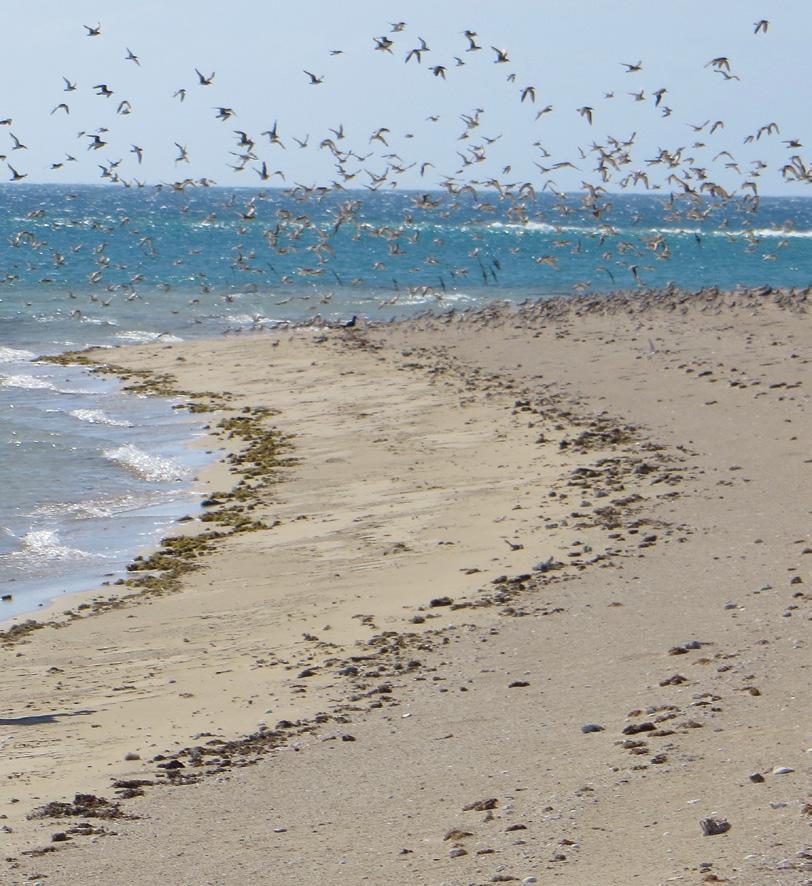
VETERAN GUIDE RICHARD SCHUMANN HAS SPENT THE BETTER PART OF HIS LIFE GUIDING BLUE CHIP CLIENTS IN THE WORLD’S BEST SALTWATER DESTINATIONS. HERE HE LIFTS THE SKIRT ON ONE PLACE THAT DOES NOT GET AS MUCH ATTENTION AS IT SHOULD. NOT THAT YOU ARE LIKELY TO GO THERE ANYWAY… IF THE COST AND INACCESSIBILITY DON’T GET YOU, THE CROCS, SHARKS, JELLYFISH AND CURRENTS WILL. STILL, WE CAN DREAM, RIGHT?
Photos.Richard Schumann, DDSC Library and East Coast Angling
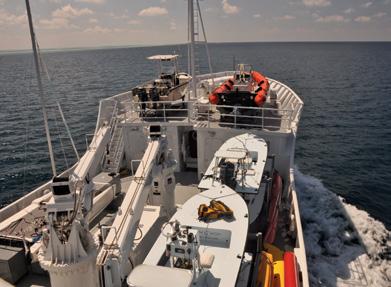
When it comes to flats fishing, Australia boasts an impressive amount of real estate. The exploration of these flats is only beginning but already some real gems have come to light. Stumble upon one of these and, for obvious reasons, it’s not general practice to proclaim your find from the rooftops. But Long Reef is different. I’m happy to share this place with you as it is so remote, difficult to access and dangerous, that very few anglers will have the means, never mind the will to visit it and it will remain, for all intents and purposes, untamed.
Seasoned anglers and explorers, Ferdi Heymann and Paul Boyers were with me on the recent expeditions to Long Reef and we all agree it is, without doubt, one of the most pristine and wild venues we have been to. And that, as we all know, invariably leads to comparisons. Lying about half way between Broome and Darwin, geographically, Long Reef is a mini version of Providence Bank in Seychelles and St Brandons on the Cargados Carajos Bank north of Mauritius. Not that Long Reef is that small. It’s about 30 km long but St Brandons dwarfs it at double that size. Providence isn’t much smaller than St Brandons and both of them have islands whereas Long Reef is completely awash at high tide. But, as with St Brandons and Providence Banks, nestling in the lee of Long Reef are sand banks and vast sand, marl and coral flats, drained by countless channels. Along the hard edge, are the typical “blue holes” one finds on reefs like this. These holes are places where you take the unsuspecting at low tide, tie on a popper, tell them to cast in and sit back and watch the carnage. In an untouched place like Long Reef, at low water these holes are packed with big bluefin, GTs, snapper, sharks and huge grouper. When it comes to comparing “wildness” and inhospitable ruggedness, there are a few flats destinations that come to mind but I would say Long Reef is almost comparable to wading the flats of Aldabra. You are going to see a marine system that’s undisturbed and as intact as it can possibly be today. As one metre is the fork length for a trophy GT, so around four metres becomes the standard for the sighting of a big predator on the flats of Long Reef. They primarily come in the form of tiger sharks, great hammerheads and saltwater crocodiles. And the lemon sharks are also among the biggest I have encountered anywhere. We all want to fish pristine flats but not all pristine flats are truly wild, and I agree with the argument that a pristine flats destination that has been tamed, can offer better fishing than an untamed equivalent. But still, some of us can’t resist the combination of true wildness and dumb fish.
Although the best fishing is seasonal, tides dictate the flats fishing at Long Reef in a quite forceful manner. The spring tide range can exceed seven metres and in seconds treacherous rip currents can form that sweep across the flats. What’s more, there’s no dry land at high tide for flotsam like you to wash ashore on, should you get caught in one of those rips. But, if you don’t do anything stupid, for the wading angler, these risks are manageable; including the potentially deadly irukandji and box jellyfish that hang there from time to time. With the risks covered, the flats of Long Reef provided us with some superb fishing. I’m a new convert so I really enjoyed the blue bastard fishing the most. They’re a fish with loads of character and are endless fun to hunt even if, at times, they can be as spooky and uncooperative as permit or triggers.
In season the queenfish are prolific and provide excellent top water action on poppers in the many channels that drain the flats, and Long Reef is the only place where I’ve seen big queenfish venture right up on to the flats, hunting in knee deep water. One of the downsides of a wild fishery is that the fish are initially, completely unaware of the danger you pose. They haven’t seen a fly in their lives and as much fun as queenfish can be on the end of a fly rod, there’s a limit. But if the permit or blue bastards are proving difficult, it’s nice to know you can stroll down to the nearest channel and go tight on a queenie.
Although it is not, by Australian standards, a prolific permit fishery, a big attraction at Long Reef is that there are both species of permit on the flats, anak and blochii. We’ve had no luck with the anak yet but it is still very early days. Although I know which I’d choose, I can imagine life can get very stressful for an indecisive angler when both blue bastards and permit are tailing within casting distance. No one said it would be easy.
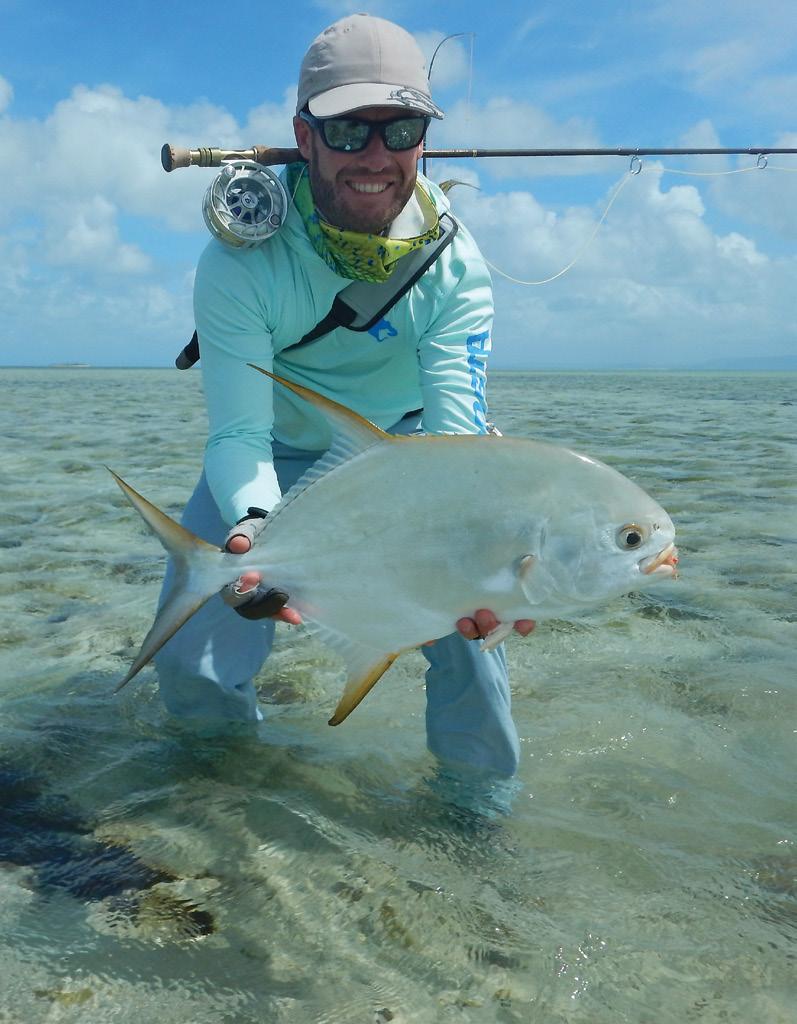
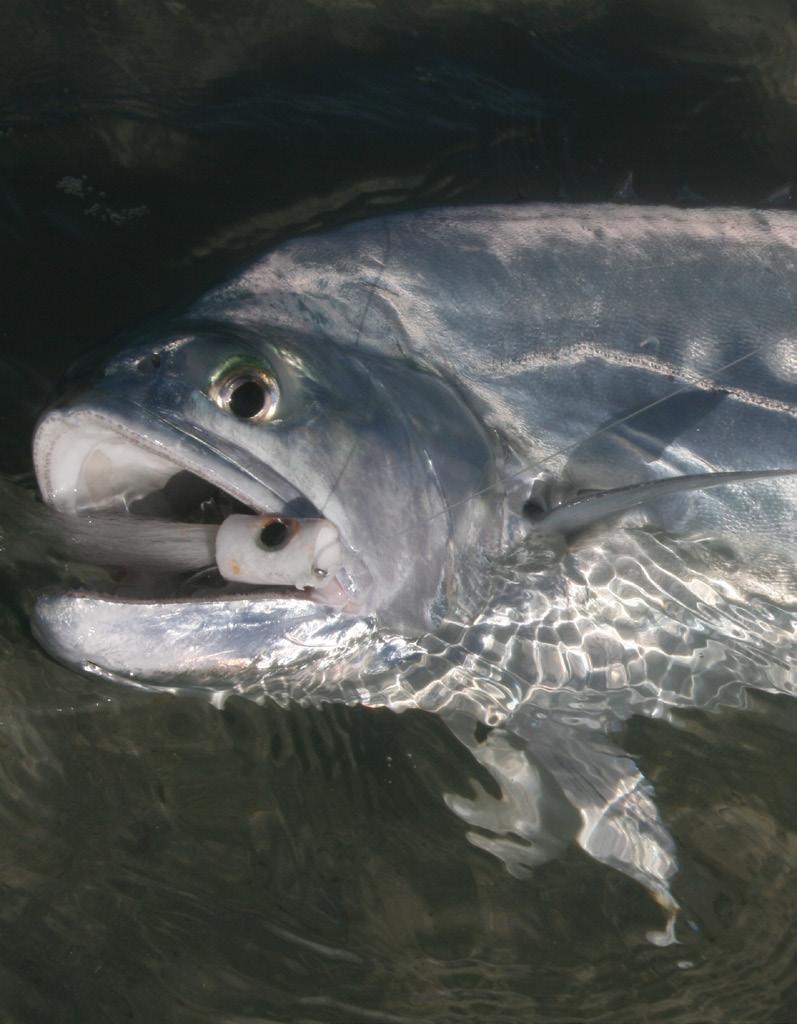
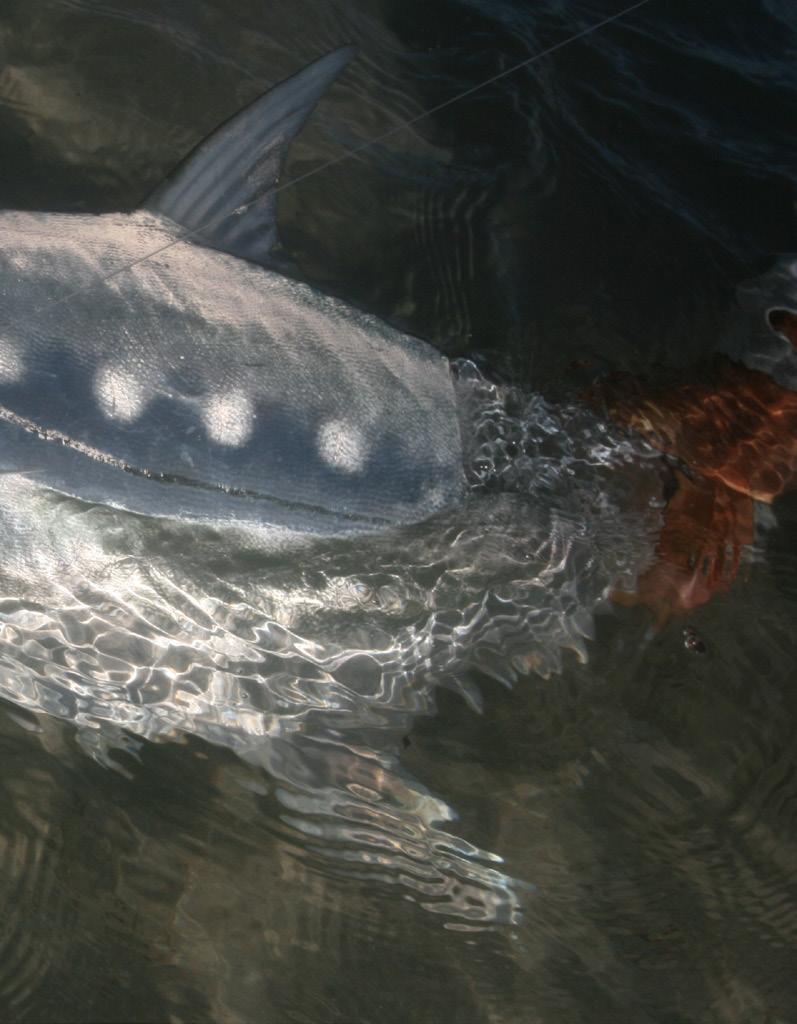
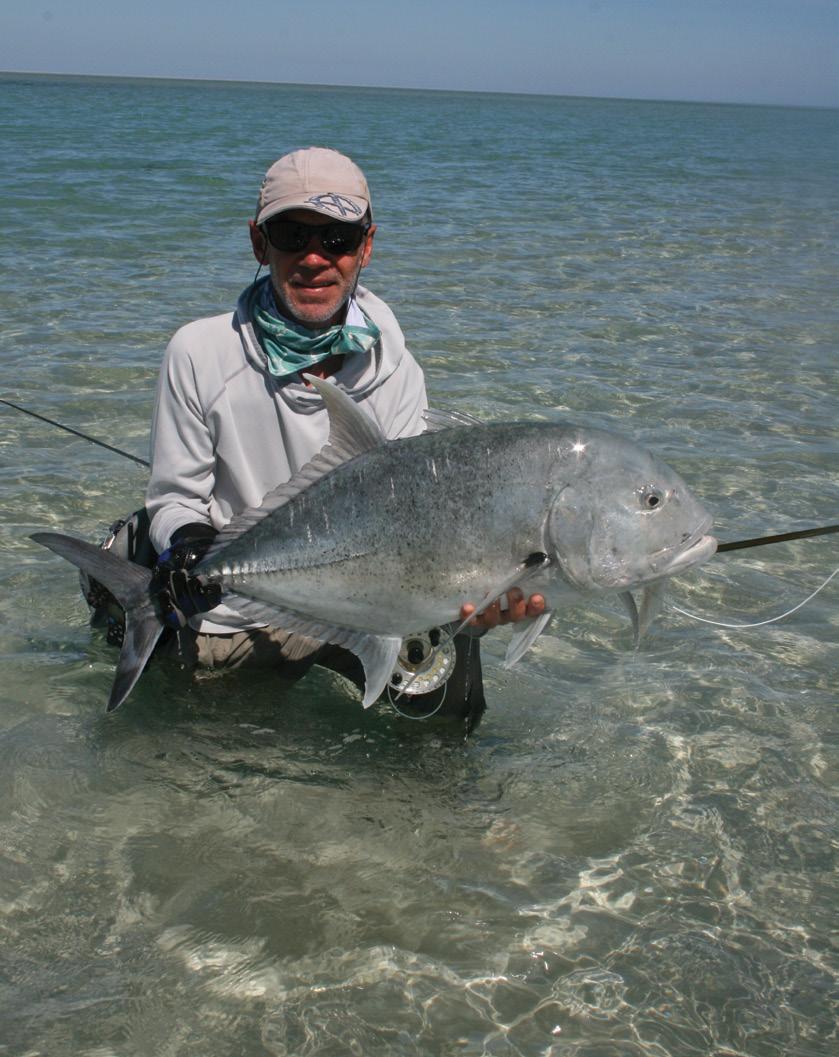
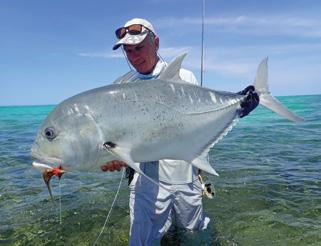
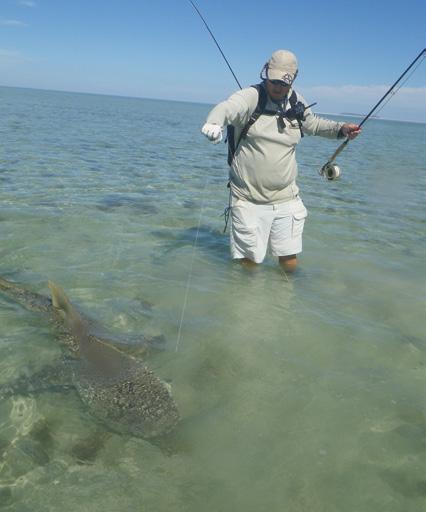
With GTs, blue bastards, lemon shark bastards and myriad other species, if you can get to it Long Reef delivers.
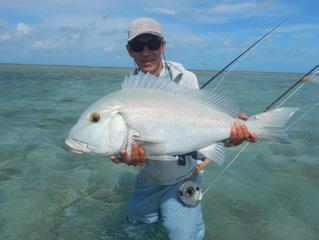
GTs also love this place. There’s plenty of flats-tucker for them and they jump on the fly like a hungry … well, like a hungry GT! The GT fishing is comparable to Astove or Cosmo, except the Long Reef fish are still dumb. As we know, no flats fish smarten up quicker than big GTs, but because of lack of pressure, Long Reef will most likely remain one of the last strongholds of the big, dumb flats GT.
I’ve caught lemon sharks on the flats in both the Indian and Atlantic oceans but have come across none as spooky as the lemon sharks one encounters on the Aussie flats. There are places in the Bahamas where once hooked, big lemons often turn defence into attack and really do try and bite you. On the flats of Aldabra, the big lemons don’t even need an excuse to become aggressive but, as is elsewhere in Australia, the lemons at Long Reef are spooky animals, even the big ones. In fact, in the shallow water of the flats the really big lemons will be the first to move off if they detect anything unnatural. My theory that explains this spooky behaviour is that the lemon sharks in the remote parts of Australia are hunted by crocodiles and, I have no doubt, by the numerous big tigers and hammerheads as well. Aussie lemons may be difficult to catch on fly but I have seen more trophy fish (1,5 metres fork length plus) on the flats of Long Reef than anywhere and a quiet approach can reap rewards.
Then, in addition to the blue bastard, there are a couple of other uniquely Australian flats species available at Long Reef. The marl flats are where the tuskfish tend to hang out and this Aussie fish is another one of those flats fish with lots of character. It’s always an entertaining hunt. They will jump on a well-presented fly with alacrity and also put up a good tussle. And the other Aussie species that may be found on the flats of Long Reef is the chinaman. South African ex pat, Glanville Heydenryck, who now lives on the Gold Coast, was the first angler to alert me to the fact that these very powerful fish sometimes venture on to the flats in northern Oz. Just recently an, angler landed one on fly wading the flats off Far North Queensland, fishing with another ex-pat, Nick Milford’s operation, East Coast Angling (eastcoastangling.com.au). No one has seen any chinaman at Long Reef yet but the habitat looks perfect. It’s going to be a lot of fun working out how to consistently catch this powerhouse.

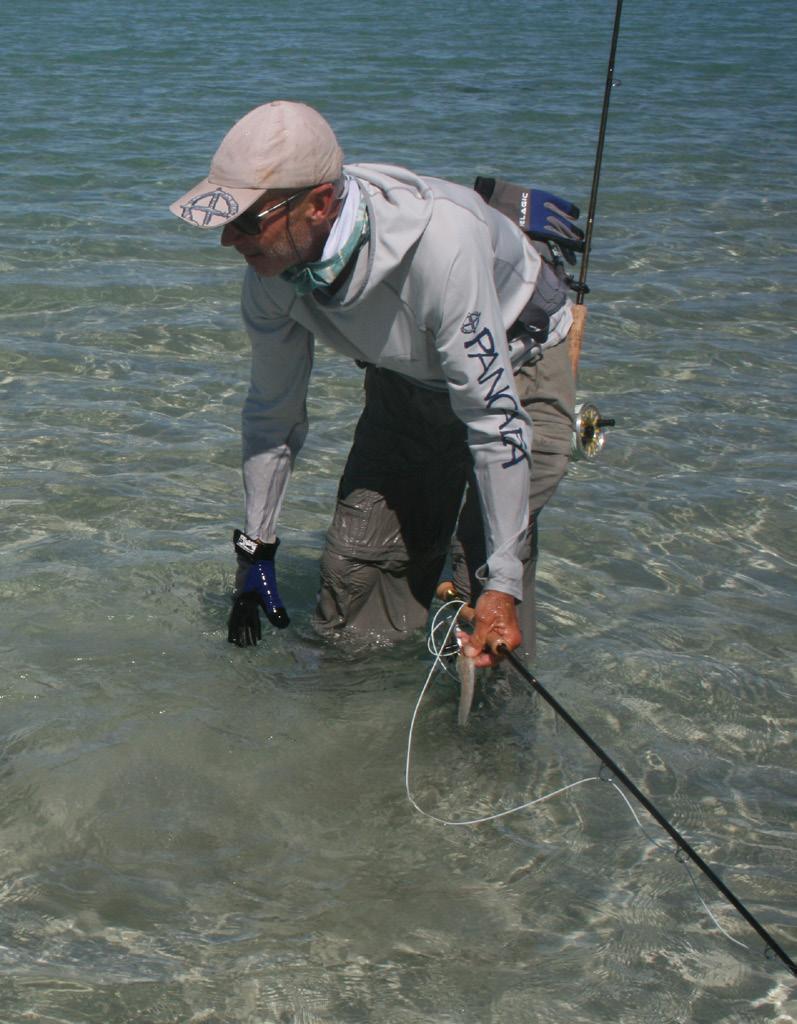
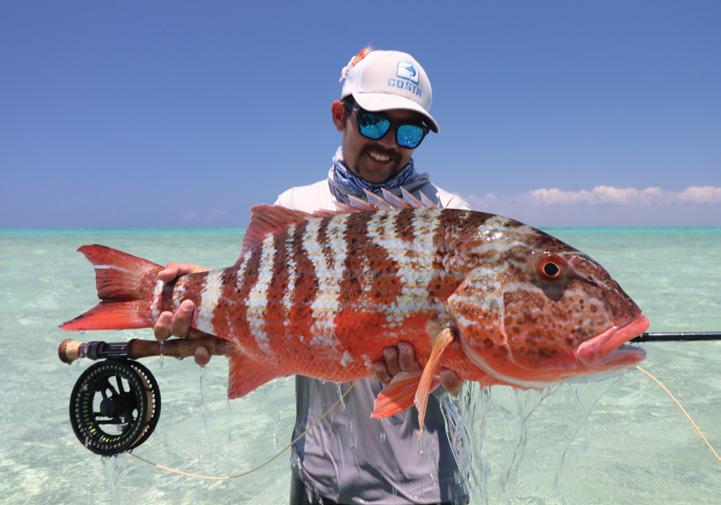
The challenge: a possible first on the flats, this Chinaman was not caught at Long Reef, but was caught on similar flats off Northern Australia. The author believes this species will soon be targeted and caught more often at Long Reef and other spots. Photo East Coast Angling
On Australian flats, the main fallback fish when things go quiet is the golden trevally. There is usually no shortage of them and they seldom refuse a good presentation and that is also the case at Long Reef. It’s just trying to line the buggers up that can prove troublesome. Sometimes they move so fast and erratically you have to shoot quickly when you see a fish or a tail pop up and hope you don’t line it. But that’s not always the case and Long Reef has a good population of cooperative goldens. Other fallback species that can be found on the flats in good numbers are greenspotted and bluefin trevally. Then there is the enigmatic and mighty milkfish of which, in Australia, there is no shortage, although the enigmatic label still sticks … they’re not always where they should be and they’re not always feeding when they should be. Having said that though, there is a good seasonal population of these fish at Long Reef. There is one fish that is conspicuous by its absence on Long Reef and that’s the bonefish. Not that it’s a surprise, for there are no more than a couple of flats in Oz that I know of that have good populations of bonefish. It seems they battle to make a living on flats near the mainland and the massive tidal range at Long Reef probably isn’t much to their liking either. Although we hardly explored the offshore potential around Long Reef, just fishing in the vicinity of the mothership anchorage produced insane couta* fishing and at times the wahoo can be wall-to-wall as well.
During the lockdown I’ve had some time to reflect on Long Reef and the other great jewels Australia has in her flats crown and it’s comforting to know that, for now, they’re under good control and protection from poaching and overfishing. It seems that no matter how remote you may think you are on the Australian coast, the Australian Border Force air and sea patrols will find you in no time and check in with you on a regular basis. Long Reef is, for now, a very special place and long may it remain so. Its inhospitable wildness will, I hope, keep it that way, and, for those few, especially lucky and fortunate anglers who manage to get there, I have no doubt “ineffable” will be the only adjective you’ll need to describe the experience.
*narrow-barred mackerel or, Scomberomorus commerson to the unwashed.
Footnote; If you think you have the balls and the wallet to tackle Long Reef, get in touch with us at The Mission (info@themissionflymag.com) and we will send carrier pigeons out to connect you with Richard.








